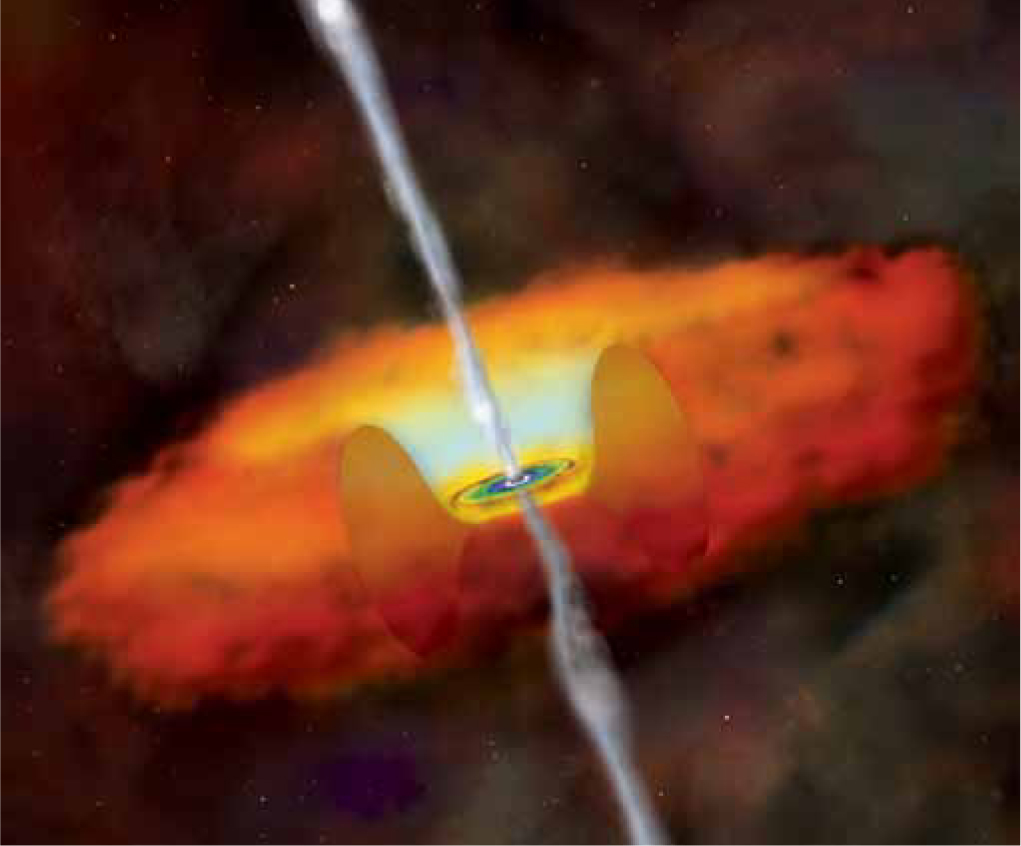703
CHAPTER
24

Quasars and Active Galaxies
LEARNING GOALS
By reading the sections of this chapter, you will learn
| 24–1 | The distinctive features of quasars |
| 24–2 | The role of supermassive black holes in powering active galactic nuclei (AGN) |
| 24–3 | How quasars can form accretion disks and jets |
| 24–4 | That active galactic nuclei can look very different depending on their orientation |
| 24–5 | The fate of active galactic nuclei and their potential to occasionally flare up |
An ordinary star emits radiation primarily at ultraviolet, visible, and infrared wavelengths, in varying proportions that are governed by the star’s surface temperature. Composed of many stars, ordinary galaxies, too, emit most strongly in these wavelength regions. But the object illustrated here, called a quasar, is outrageously different: It emits strongly over an immense range of wavelengths from radio to X-ray.
The name quasar refers to one of the most fantastic types of objects in all of astronomy. At a quasar’s core is a supermassive black hole that can be a billion times more massive than our Sun! Hot gas around this black hole can give off a tremendous amount of visible light—enough to shine with a luminosity ten thousand times more than a typical galaxy.
As in this illustration, some quasars even have strong jets. Unlike young stars that form smaller and slower-speed jets, matter in quasar jets travels near the speed of light and can shoot well beyond the galaxy that hosts the quasar. Galaxies that hold a quasar—always at the galaxy’s center—are called active galaxies. Untangling the mysterious properties of quasars has been in process for more than half a century and is still a major topic of research today. Physicist George Gamow captured the intriguing nature of quasars in his 1964 revised lullaby:
704
Twinkle, twinkle quasi-star
Biggest puzzle from afar
How unlike the other ones
Brighter than a billion suns.
Twinkle, twinkle quasi-star
How I wonder what you are.